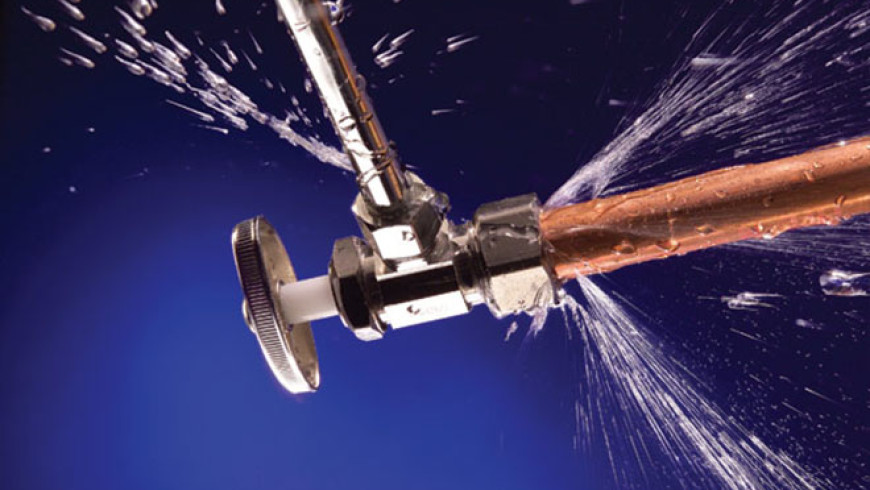Your Residential Principal Typical Factors of Leakage: In-Depth Analysis
Your Residential Principal Typical Factors of Leakage: In-Depth Analysis
Blog Article
Just how do you really feel on the subject of Common Water Leaks In House?

Leakages not just create waste of water but can also trigger unneeded damage to your house and also advertise undesirable natural development. By recognizing and looking for day-to-day scenarios that trigger leaks, you can safeguard your residence from future leakages and unneeded damages.
Encroaching roots
The majority of water leakages start outside the home rather than inside it. You may notice damp spots or sinkholes in your lawn, as well as that might imply that tree roots are getting into water lines causing water to seep out.
Corroded water supply
This might be the cause of staining or bending on your water pipes. If our plumbing system is old, consider changing the pipes since they are at a greater danger of corrosion than the more recent designs.
Malfunctioning Pipe Joints
The point at which your pipelines attach is regularly the weakest web link in the waterline. Pipeline joints can weaken in time, leading to water leaks. Unfortunately, most of pipe joints are not easily visible. If you have noisy pipelines that make ticking or banging sounds, especially when the hot water is activated, your pipe joints are most likely under a great deal of stress. It is suggested to have your plumber evaluate your system once a year.
Immediate temperature changes.
Extreme temperature level modifications in our pipes can trigger them to expand and contract all of a sudden. This growth and contraction might create cracks in the pipes, especially if the temperature are below freezing. If you maintained an eye on exactly how your plumbing works, it would be best. The presence of the previously mentioned circumstances regularly suggests a high danger.
Poor Water Connectors
At times, a leak can be created by loose tubes as well as pipelines that supply your devices. In case of a water links leakage, you may observe water running directly from the supply line or puddles around your devices.
Clogged Drains
Blocked drains pipes might be annoying and also inconveniencing, yet they can in some cases wind up creating an overflow causing rupture pipelines. Keep getting rid of any kind of products that might drop your drains pipes that could clog them to avoid such hassles.
All the above are sources of leaks yet not all water leakages arise from plumbing leakages; some leaks may come from roofing system leaks. All leaks need to be fixed quickly to stay clear of water damages.
Leaks not only create waste of water yet can likewise cause unneeded damages to your home and also advertise undesirable organic development. By looking and comprehending for day-to-day scenarios that create leakages, you can safeguard your house from future leakages as well as unnecessary damages. Today, we will look at 6 leak creates that may be creating your pipelines to drip.
At times, a leak can be created by loose pipes and also pipes that supply your devices. In case of a water connections leakage, you may discover water running straight from the supply line or puddles around your home appliances.
How To Check For Water Leak In Your Home
How To Check for Leaks
The average household's leaks can account for nearly 10,000 gallons of water wasted every year and ten percent of homes have leaks that waste 90 gallons or more per day. Common types of leaks found in the home are worn toilet flappers, dripping faucets, and other leaking valves. These types of leaks are often easy to fix, requiring only a few tools and hardware that can pay for themselves in water savings. Fixing easily corrected household water leaks can save homeowners about 10 percent on their water bills.
To check for leaks in your home, you first need to determine whether you're wasting water and then identify the source of the leak. Here are some tips for finding leaks:
Take a look at your water usage during a colder month, such as January or February. If a family of four exceeds 12,000 gallons per month, there are serious leaks.
Check your water meter before and after a two-hour period when no water is being used. If the meter changes at all, you probably have a leak.
Identify toilet leaks by placing a drop of food coloring in the toilet tank. If any color shows up in the bowl after 10 minutes, you have a leak. (Be sure to flush immediately after the experiment to avoid staining the tank.)
Examine faucet gaskets and pipe fittings for any water on the outside of the pipe to check for surface leaks.
Undetected water leaks can happen without the home or business owner even realizing. If you suspect a water leak, but not able to find the source. It is time to contact a professional water leak detection service, The Leak Doctor.
How To Find a Water Leak In Your Home
https://www.leakdoctor.com/blog/How-To-Check-For-Water-Leak-In-Your-Home_AE197.html

I'm just very involved in How to detect water leaks in your home and I'm hoping you enjoyed the new page. Remember to set aside a second to promote this page if you enjoyed it. We appreciate reading our article about Common Water Leaks In House.
For instant fixes, dial! Report this page